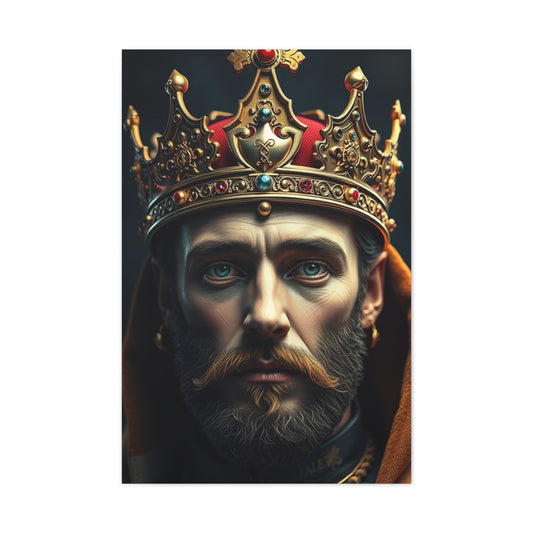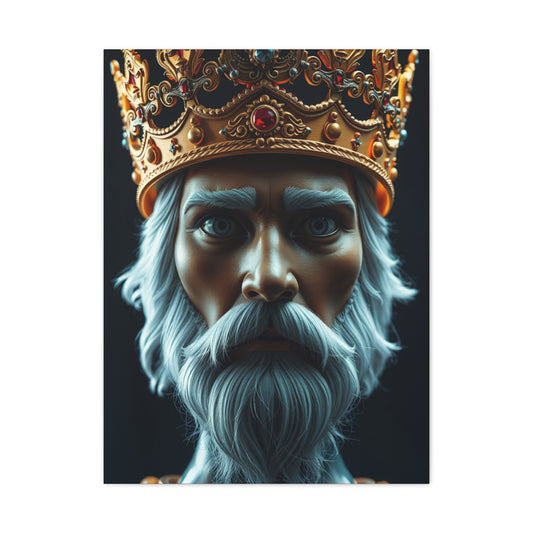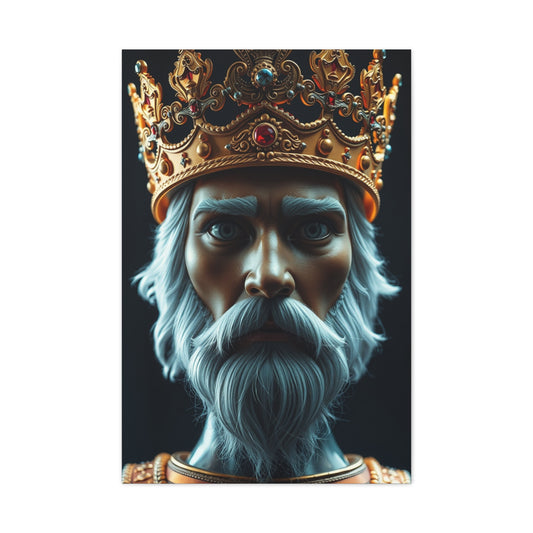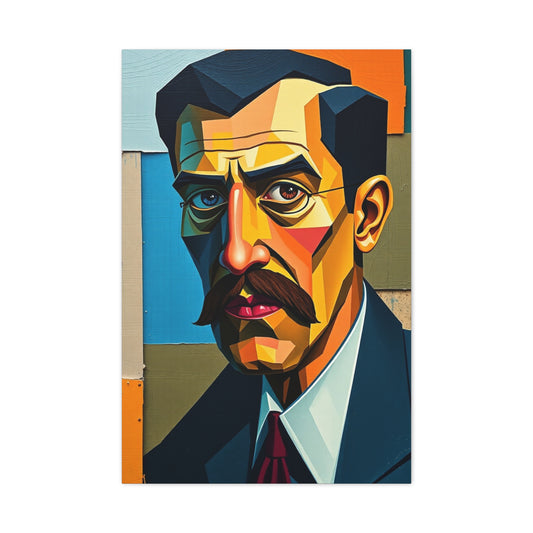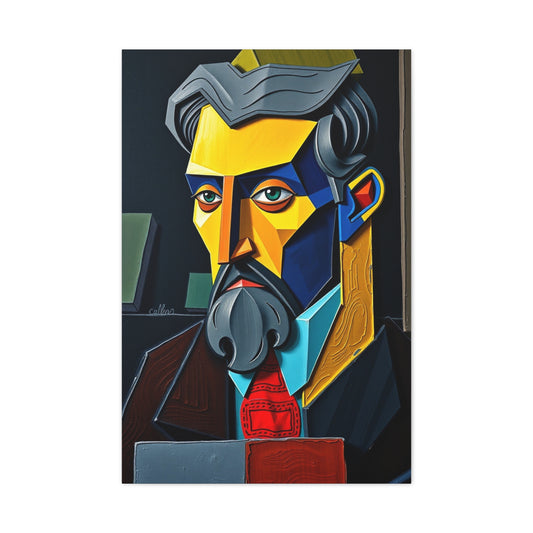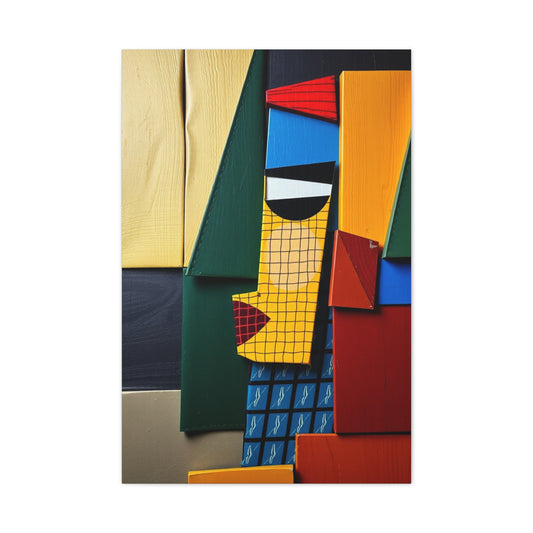Photography is much more than capturing aesthetically pleasing scenes—it is a language through which stories are told, emotions are shared, and awareness is raised. One of the most powerful tools in a photographer’s storytelling arsenal is the photo essay. A well-constructed photo essay can stir emotions, ignite conversations, and bring nuanced narratives to life—all without a single written word.
Whether you're aiming to become a professional photojournalist, enhance your documentary practice, or experiment with fine art photography, crafting thoughtful photo essays is an ideal way to hone your creative voice. This comprehensive guide explores real-world examples from acclaimed photographers and provides engaging, achievable ideas you can begin right in your own environment.
What Sets a Photo Essay Apart?
A photo essay is a visual narrative that strings together a series of photographs around a single subject, theme, or concept. Much like written essays, it’s structured, deliberate, and thematic—but its storytelling is powered entirely through images. Each photograph adds a piece to the puzzle, contributing emotion, detail, and perspective to the overall arc.
A successful photo essay doesn’t require exotic destinations or sensational topics. Its power lies in cohesion. Every image should serve the larger narrative—whether it’s capturing the nuance of everyday life or highlighting profound global issues. The most compelling photo essays are those that stay focused, use a clear visual language, and explore a subject from various dimensions without losing clarity or direction.
Photographers can use styles ranging from candid street captures to stylized portraiture. What matters is that the style suits the subject and helps communicate the story effectively.
Renowned Photo Essay Projects from Visionary Photographers
To truly grasp the profound impact that visual storytelling can have, it is essential to explore the works of some of the most celebrated photographers in the world. Their photo essays not only demonstrate technical mastery but also convey powerful narratives that transcend mere visuals. Each of these photographers has crafted a body of work that speaks to universal themes such as culture, identity, conflict, and resilience, all while making the viewer feel a deep connection to the subjects captured. These visual essays do not just present scenes; they offer an opportunity for profound introspection into the human experience, revealing layers of complexity that transcend mere photographic technique.
Cossack Heritage Reimagined – Anastasia Taylor-Lind
Anastasia Taylor-Lind’s series, which delves into the lives of young women in Ukraine participating in a nationalist Cossack revival, is a striking portrayal of how deeply cultural history can influence contemporary identity. By focusing on a group of women who have embraced the traditions and rituals of the Cossack warriors of old, Taylor-Lind’s work goes beyond surface-level reportage. Through her lens, we gain an intimate glimpse into a reimagined heritage that speaks not only to the past but also to the complex present-day identities of these women.
Her photographs are a delicate balance between strength and vulnerability. Taylor-Lind doesn't shy away from the rigorous military drills and strict discipline that are central to the Cossack tradition. However, she also brings us into quieter, more personal moments—those that often go unnoticed or are deemed insignificant. These moments, whether it's a fleeting smile or a pause during a practice, humanize her subjects, adding layers of nuance to what could otherwise be an oversimplified portrayal. The juxtaposition between the hardness of their uniforms and the softness of their expressions creates a compelling tension in each frame, leaving the viewer to consider the complex intersection of nationalism, femininity, and personal identity.
What makes this photo essay so powerful is that it does not lean toward a specific judgment about the Cossack revival. Instead, it presents the practices and the women involved with a sense of respect and curiosity, allowing the viewer to form their own opinions. This is a characteristic hallmark of Taylor-Lind's documentary style—she refrains from romanticizing or critiquing her subjects, instead offering a window into their world, leaving space for reflection.
|
Related Catagories: |
The Culture of Modern Rites – Dina Litovsky
Dina Litovsky’s exploration of the modern bachelorette party scene is an insightful and often playful commentary on gender, freedom, and societal expectations. Through her photo essay, Litovsky captures a tradition that has often been reduced to stereotypes of excess and hedonism. Yet, her images challenge these superficial portrayals and offer an in-depth look at the multifaceted nature of these rituals. Her lens uncovers moments of joy, vulnerability, and self-expression, each frame a window into the complex web of emotions that these women experience.
Litovsky’s work is particularly notable for its ability to capture candid, unguarded moments that convey the rawness of human emotion. Rather than simply documenting the flashy costumes or the wild antics that often accompany bachelorette parties, she focuses on moments where the masks come off. Through her eyes, we see the women behind the celebration—their moments of quiet reflection, their interactions with one another, and the fleeting sense of freedom they experience in a world that often constrains their choices. In doing so, Litovsky’s photos invite us to reconsider what these modern rites symbolize. Are they a form of rebellion against societal norms, or are they a reflection of deeper cultural and personal desires?
Her ability to navigate the tension between tradition and rebellion within these celebrations speaks to the broader themes of gender politics and societal expectations. The bachelorette party, in Litovsky’s portrayal, is not just a frivolous event—it is a space for exploring identity, empowerment, and the complexities of modern womanhood. Her photos remind us that while these events may appear to be about fun and indulgence, they also serve as arenas where women negotiate their place in a world that often imposes rigid roles upon them.
Inside the Trauma Room – Eugene Richards
Eugene Richards' photo essay, "Inside the Trauma Room," stands as one of the most gripping and intimate examinations of the American healthcare system. Created during the late 1980s, Richards' work remains as poignant and relevant today as when it was first shot, serving as a timeless exploration of the intersection between medical practice, human suffering, and emotional endurance. This deeply immersive photo essay captures the chaos, compassion, and raw emotion that permeate trauma rooms, offering viewers a rare, unfiltered look at the fragility of life.
Richards spent a significant amount of time in the trauma room, documenting the swift, often frantic, pace of emergency care as well as the tender, sometimes heartbreaking, moments that occur behind the scenes. His photographs reveal the harsh realities of life-or-death medical situations: the urgency of doctors and nurses, the quiet desperation of patients, and the resilience of those who find themselves in these high-stress environments. But, perhaps more profoundly, Richards highlights the emotional toll that such work takes on those who provide care. He does not shy away from showing the emotional labor involved in the healthcare profession, particularly the burnout and exhaustion that often accompany such a demanding line of work.
What sets Richards’ work apart is his ability to balance the intensity of these scenes with moments of profound humanity. While his photographs are unflinching in their depiction of trauma, injury, and despair, they are also rich in tenderness. Whether it’s a doctor holding a patient’s hand or a nurse taking a moment to breathe, Richards captures the quiet moments that are often overlooked in the midst of chaos. In doing so, he humanizes the healthcare system, reminding viewers that behind every medical procedure, there is a story of human connection and emotional resilience.
Richards' essay serves as a powerful reminder of the importance of empathy and compassion in healthcare. The rawness of his images compels us to think critically about the state of emergency care and the people who work tirelessly within it. The trauma room, as Richards presents it, is a place where both life and death are encountered with equal measure of urgency, and where the fragility of the human condition is laid bare for all to see.
Rebuilding After Conflict – Nick Danziger in Sierra Leone
Nick Danziger’s photography in post-conflict Sierra Leone is a powerful testament to the resilience and strength of individuals rebuilding their lives after experiencing immense hardship. The aftermath of the brutal civil war left many in the country shattered, both physically and emotionally. Yet, Danziger’s work does not focus on the devastation itself; instead, it sheds light on the remarkable endurance of the survivors. Through his intimate portraits, he captures the essence of people who have not only endured unspeakable trauma but have found ways to rise above it.
Danziger’s approach is to use natural light, which brings a sense of authenticity and rawness to his work. This stylistic choice allows the viewer to connect deeply with his subjects, creating a bond that transcends mere observation. His close-up compositions invite the viewer to examine the strength and dignity of each person. In the faces of these survivors, we see not just pain, but also defiance, hope, and a deep sense of personal identity. The simplicity of his technique, focusing on the emotions conveyed through expressions and subtle details, enhances the profound message of his work. Danziger’s portraits reveal that the true strength of these individuals lies not just in their survival but in their ability to rebuild their lives amidst systemic hardship and a national landscape still grappling with the scars of conflict.
Through Danziger’s lens, we see the unyielding spirit of a country that, though physically devastated, continues to endure. The portraits he captures are not of passive victims but of active survivors, each one a symbol of resilience. These images stand as a tribute to the human capacity to withstand hardship and continue moving forward, even when the past is so painfully present. Danziger’s work, therefore, is not just a documentation of conflict—it is a visual representation of the strength and identity that can emerge from even the darkest times.
Myth and Metaphor – The World of Anya Anti
Anya Anti’s work stands in stark contrast to traditional documentary photography, embracing fantasy, symbolism, and surrealism as powerful narrative tools. Her photo essays are not concerned with literal representations of the world; rather, they invite viewers into a dreamlike realm where metaphor and allegory hold sway. Anti’s subjects often take the form of women positioned within fantastical, often otherworldly environments. These portraits transcend the mundane, fusing natural elements with emotional depth and creating imagery that feels both intimate and vast in its metaphorical implications.
Anti’s work suggests that photography does not always need to follow the conventions of factual reporting. Instead, it can create visual poems that resonate on a deeply emotional level. Her approach to storytelling is imbued with symbolism, inviting viewers to explore themes of transformation, self-discovery, and the complex relationship between identity and nature. In each of her photo essays, she conjures a world where the boundaries between reality and imagination blur. Her work speaks to the way that women’s experiences, particularly those relating to personal growth and empowerment, can be expressed through visual allegories.
While Anti’s photographs may not adhere to the traditional structures of a photo essay, they are no less powerful in their ability to convey meaning. By abandoning the need for strict realism, she is able to explore the fluidity of experience, revealing a world of inner emotions, desires, and dreams. Her work challenges the idea that photo essays must be grounded in fact and invites viewers to engage with photography in a more abstract, intuitive way. In doing so, Anti expands the possibilities of what a photo essay can be—one that uses the language of metaphor to express the complexities of the human experience.
Environmental Resistance – Rhiannon Adam’s Fracking Portraits
Rhiannon Adam’s visual exploration of the anti-fracking movement in the UK offers a poignant commentary on grassroots activism and environmental resistance. Through her grounded, quiet portraits, Adam highlights the faces of those who are standing up against the controversial practice of hydraulic fracturing, or fracking. Her work gives voice to the protestors, not as radicals or extremists, but as thoughtful individuals deeply concerned about the well-being of their communities and the environment.
Adam’s photographs are subtle yet powerful, conveying a deep emotional connection between the protestors and the land they are fighting to protect. The stoic expressions of her subjects, captured with a sense of calm, reveal the emotional depth of their commitment to their cause. In each image, there is a quiet strength, a determination to safeguard both the environment and the future. By focusing on the people behind the protest, Adam’s work humanizes the issue of environmental activism, reminding viewers that it is not just a political stance but a deeply personal commitment.
What makes Adam’s photo essay particularly compelling is its emotional resonance. While the protest against fracking may seem like a political issue, her photographs underscore the profound emotional stakes involved. The land, the community, and the future of the planet are all at risk, and her subjects, with their quiet resolve, represent the collective will to fight for something greater than themselves. Through Adam’s lens, the anti-fracking movement is not just a battle for policy change—it is a struggle to preserve the essence of life itself.
Stateless and Overlooked – William Daniels
William Daniels’ global photo essay on statelessness highlights one of the most overlooked human rights issues of our time—the plight of people who are legally denied a nationality or citizenship. Stateless individuals often live in a legal limbo, unable to access basic rights such as healthcare, education, or employment. Daniels’ work brings attention to these marginalized communities, documenting their struggles, challenges, and resilience in the face of systemic invisibility.
Through his powerful images, Daniels captures the humanity of stateless individuals, illustrating their lives beyond the labels often imposed upon them. His photographs serve as a poignant reminder that these people are not just statistics—they are human beings with stories, hopes, and dreams. Whether in refugee camps or urban slums, Daniels’ images transcend geographical boundaries, showing that statelessness is a global issue that affects millions of people around the world. His work is both visually captivating and socially critical, urging the viewer to reflect on the broader implications of statelessness and the importance of human rights for all.
Daniels’ essay does more than just document the issue—it forces the viewer to confront the systemic barriers that perpetuate statelessness and marginalization. His images are an invitation to consider the question of identity and belonging in a world where millions of people remain overlooked and denied the most basic rights. Through his lens, Daniels not only sheds light on the invisible but also gives a voice to the voiceless, making his work a powerful tool for social change.
Arctic Adversity – Savannah Cummins
Savannah Cummins, a professional climber and photographer, takes her camera to some of the harshest environments on Earth. Her polar series, which documents life in the Arctic and other subzero climates, is a breathtaking exploration of survival, resilience, and human endurance in the face of extreme conditions. Cummins’ unique perspective as both a climber and a photographer allows her to capture the physical and emotional toll of life in such inhospitable climates, revealing the inner strength required to navigate these landscapes.
Her images are as much about the environment as they are about the individuals who survive in it. Through her photographs, Cummins brings the viewer into a world where every decision can mean the difference between life and death. The subjects of her photos are not merely participants in a daring adventure—they are individuals pushing the limits of human endurance and survival. Cummins’ work captures the stark beauty of the polar landscape while also telling the stories of the people who call it home or venture through it in pursuit of exploration.
What makes Cummins’ photo essays stand out is the combination of personal involvement and technical excellence. She is not merely an observer of the harsh Arctic conditions—she is an active participant in them. Her work underscores the profound connection between the photographer and the environment they document, showing how deeply immersive a photo essay can become when the photographer is physically and emotionally invested in the experience. Through her lens, the viewer is invited into the heart of the Arctic wilderness, where human resilience and the unforgiving environment are locked in a constant, awe-inspiring struggle for survival.
Practical and Creative Photo Essay Ideas You Can Start Today
Not every impactful photo story requires a global cause or dramatic landscape. Meaningful stories are everywhere. Below are 19 original and accessible concepts for creating a compelling photo essay—each one designed to be adaptable regardless of your experience level or gear.
1. Document a Relative's Life
Every individual carries a unique and personal narrative, and often, the people closest to us hold the most meaningful stories. Photographing a relative, whether it be a parent, grandparent, or sibling, offers a deeply emotional experience that can unveil moments of tenderness, wisdom, and quiet reflection. The process of documenting their life in its rawest form can result in a series of images that are as much about the person’s daily routine as they are about the connections you share with them.
Capturing stillness is just as important as portraying action or expression in these intimate moments. You might find a parent sitting at a table, lost in thought, or a sibling immersed in a quiet hobby. These seemingly mundane moments have the power to tell a deeper story about who they are and the world they inhabit. The background, often their home or personal space, plays a critical role in adding layers of context. The photographs taken here go beyond superficial documentation—they become part of the subject's legacy, preserving not only their appearance but the essence of their life. By photographing your relative as they navigate their everyday routine, you are creating a visual narrative that transcends time, offering future generations an intimate glimpse into their lives.
Furthermore, these photographs can also serve as a form of storytelling, where you focus on gestures, expressions, and quiet moments that might otherwise be overlooked. The small details, like a grandmother’s hands holding a cup or a father’s thoughtful gaze as he looks out of a window, provide a deep connection to the person. These images can be incredibly powerful when woven into a collection that tells the story of a life well-lived, offering a timeless tribute to the person you love.
2. Neighborhood Life in Motion
Our neighborhoods are often filled with overlooked beauty and stories waiting to be discovered. With a fresh perspective, you can transform your regular surroundings into a canvas for photography. Walking your own block with a keen eye for detail can open up new ways to engage with the environment, uncovering textures, light, relationships, and moments of spontaneous interaction that would normally pass unnoticed. Urban spaces, particularly those that are constantly shifting in light, activity, and weather, hold a unique narrative potential. By focusing on the fleeting nature of these moments, you capture the vibrant pulse of life as it moves through a given space.
One of the most captivating aspects of photographing neighborhood life is the ability to combine both still structures and human motion. The static nature of buildings, streets, and walls contrasts beautifully with the dynamic moments of people coming and going. These fleeting human interactions—such as a child playing in the yard, a couple walking hand in hand, or a neighbor smiling as they water their plants—serve as snapshots of daily life. These pictures reflect the ebb and flow of community and the personal connections that bind individuals together.
|
Related Catagories: |
Your neighborhood, whether urban or suburban, has its own rhythm. The way light shifts over the course of the day, the way shadows stretch as the sun sets, or the occasional surprise—a dog chasing a frisbee or a street vendor selling their wares—creates an evolving narrative. By embracing the changing light and shifting motion, your photographs become a document of this living, breathing environment. In this way, your photo essay is not just about the place, but the people, energy, and atmosphere that bring it to life.
3. A Day's Journey
Photographing your own journey for a day is a deeply personal form of storytelling, allowing you to reflect on the spaces and interactions that shape your life. From the moment you wake up in the morning to the last light of the evening, this project provides an opportunity to track your experiences, movements, and encounters. By documenting your daily transitions—from solitude in the morning light to the social interactions that occur during the day, or from the busy hours of work to quiet moments in the evening—you can showcase the ebb and flow of life itself.
This project can be structured to reflect the passage of time, using the natural light at different points in the day as a framing device. Morning light, with its soft hues, can represent moments of quiet introspection or solitary activity, while the bright midday sun might capture busier, more social moments. As the day fades into evening shadows, the photos can shift to reflect the transition from activity to relaxation. This natural progression creates a narrative arc within the photo essay, with each section of the day revealing different aspects of your life.
Through this process, you may notice patterns or changes in your own behavior, as well as in the people around you. Whether you’re capturing a coffee break with a friend or the quiet solitude of an evening walk, these photographs provide a window into your own journey. The result is a deeply personal story about your day, one that reflects not just the events but the emotional states and thoughts that shape your experience. This type of photo essay, centered on your daily routine, becomes a valuable exploration of personal transformation over time.
4. One Spot, Many Moments
Sometimes, the most profound stories are found in a single location that changes over time. Choosing one spot and returning to photograph it regularly allows you to capture how it evolves across hours, days, or even seasons. Whether you decide to focus on a tree, a street corner, a specific building, or a park bench, the repetition of visiting the same place over time reveals subtle transformations in the environment that would otherwise be unnoticed. This kind of project becomes a record of change, documenting not only the physical transformations of the location but also the passage of time and the human experiences that unfold there.
For instance, capturing the same street at different hours of the day allows you to observe how light and shadow shift, how people come and go, and how the location’s mood changes from the bustling energy of the afternoon to the quiet stillness of the night. Alternatively, focusing on the same tree through the changing seasons shows the cycles of nature—how the branches bare in winter, the leaves bloom in spring, the branches stretch in summer, and the foliage turns golden in fall. These shifts, while subtle, reflect the passage of time and the resilience of nature or urban life.
Photographing a single location over time offers more than just a visual chronicle; it becomes a metaphor for the constant state of flux that surrounds us. The transformation of the scene represents the broader changes in life itself, whether personal, environmental, or societal. It becomes a meditation on continuity and impermanence, inviting the viewer to reflect on the passage of time and the unspoken stories embedded in the spaces we inhabit.
5. Metamorphosis of a Subject
One of the most compelling types of photo essays is the tracking of a subject's evolution over time. This could involve documenting a growing child, a changing sky, a decaying building, or even an evolving piece of art. By consistently framing the subject from the same perspective, you create a visual thread that illustrates transformation. This concept taps into the deep human fascination with change, whether it’s the physical development of a loved one, the natural deterioration of an object, or the gradual shift in an environment or structure.
For example, photographing a child as they grow—capturing their changes in posture, expression, and even the physical space they inhabit—can provide a touching visual narrative of childhood. Similarly, documenting the slow process of a building's decay or an art piece evolving through multiple stages of creation can offer a narrative that is both poignant and powerful. In this type of photo essay, time becomes a key element. The viewer witnesses the changes over months or years, and the series itself serves as a visual chronicle of growth, decay, or progress.
The impact of such a project lies in the consistency of the framing, which allows the viewer to draw connections between the different stages of the subject's transformation. Whether it’s a child growing into adolescence, a cityscape changing with the seasons, or a personal project evolving from conception to completion, this kind of photo essay can become a rich, layered narrative that captures the essence of change in a way that words alone cannot.
6. Protest Through a Lens
Documenting a protest, rally, or demonstration is one of the most powerful ways to use photography as a tool for social commentary. Protests often feature strong political or ideological themes, but the true power of the photo essay comes from focusing not just on the messages being shared but also on the human emotions and experiences behind the protest. Capturing the faces of participants—whether in moments of defiance, joy, or exhaustion—reveals the intensity and emotional undercurrents of the movement.
This type of photography goes beyond simply documenting the signs or slogans of the event. It seeks to capture the quiet moments between the loud calls for change: the determined gaze of a protestor, the supportive hand on a shoulder, the small act of solidarity that might otherwise go unnoticed. The key to this photo essay is balance—while it’s important to document the overarching cause, the most striking images often come from the personal moments that show the vulnerability, passion, and resolve of the individuals involved. Through your lens, you bring these emotional nuances to light, revealing the depth of the cause and the human stories behind it.
Photographing protests requires sensitivity and awareness. It’s crucial to strike a balance between the observational nature of the work and the narrative you wish to tell. Whether documenting the climate strikes of young activists or political rallies, this photo essay provides a platform to tell powerful stories about collective action, resistance, and change. The resulting images offer a timeless record of the social movements that shape our world, often speaking to the unspoken emotional currents that drive people to stand up and make their voices heard.
7. Community Celebrations
Photographing a local event from setup to teardown offers a unique opportunity to capture not just the public moments of festivity, but also the behind-the-scenes energy that brings such celebrations to life. Whether it’s a local festival, holiday celebration, or community fair, the process of preparing for and wrapping up an event reveals the intimate, often overlooked moments that define the spirit of the gathering. By documenting both the anticipation and the reflection, you create a narrative that goes beyond the loud music, colorful decorations, and lively crowds to focus on the human effort, joy, and connection that make these celebrations meaningful.
From the quiet moments before the event kicks off—people chatting, setting up tables, adjusting decorations—to the laughter and excitement that fill the air when the festivities begin, there is a profound energy that can be captured through the lens. Focus on the hands preparing food, the expressions of children as they dance with abandon, or the fluttering of streamers caught by a gentle breeze. These are the details that encapsulate the essence of community—individuals coming together to create something beautiful and memorable. By photographing these elements, you elevate the celebration beyond the surface-level spectacle and reveal the deeper threads that hold the community together.
As the event winds down, the teardown offers a striking contrast to the high-energy moments earlier. The quiet efforts of volunteers gathering discarded cups, the fading sound of music, and the softening light all tell a different story, one of completion and reflection. These quieter moments provide a sense of closure to the event and can highlight the emotional resonance that comes with the end of a shared experience. In this way, your photo essay becomes a complete visual story of community celebration—a testament to both the collective joy and the personal effort that go into creating such events.
8. Forgotten Spaces
Exploring and documenting abandoned places—whether factories, schools, houses, or playgrounds—offers an intriguing opportunity to capture the beauty of decay and the passage of time. These forgotten spaces are often imbued with a sense of mystery, as their walls and objects tell the stories of lives once lived, industries that have shut down, and communities that have moved on. The haunting beauty of these abandoned locations lies in the way light interacts with the space, casting long shadows over peeling paint, rusted metal, or crumbling brick. Every crack in the walls, faded photograph, and broken window holds a fragment of the past, creating a powerful narrative of abandonment and the inevitable forces of time.
The key to photographing forgotten spaces is allowing light and decay to tell their own stories. Natural light, in particular, can add an ethereal quality to these spaces, illuminating the intricate details that may otherwise be overlooked. The play of light on rusted surfaces, the way dust particles catch the sunlight, or how shadows stretch across empty rooms all create a mood that is both poignant and evocative. These spaces, in their abandonment, hold a certain melancholy—yet they also carry the potential for beauty, as nature reclaims them and time marks its passage.
While exploring abandoned places can be visually captivating, it is essential to approach these locations with respect for both privacy and legality. Many such spaces may be on private property or unsafe to enter without proper precautions. Always ensure that you are adhering to local laws and that your safety is a priority. By doing so, you not only protect yourself but also ensure that your exploration remains respectful of the history and stories these places contain.
9. Global Issues in a Local Frame
Addressing global issues through the lens of your local environment offers a powerful way to show how larger, abstract challenges affect individuals in a tangible, personal way. Topics such as gentrification, food insecurity, or environmental change may seem like distant, impersonal issues, but when viewed through the microcosm of your own city or neighborhood, their effects become deeply visible and urgent. By capturing these subtle signs—like boarded-up shops, deforested areas, polluted rivers, or communities displaced due to development—you highlight the human consequences of global problems and bring them closer to home.
One of the most striking aspects of photographing these issues is the ability to show the incremental changes that occur over time. Gentrification, for example, is often visible in the rising cost of rent, the closing of small, local businesses, and the influx of more affluent residents into historically working-class neighborhoods. By capturing these shifts in your community, you not only document the physical changes but also the emotional and social impact on long-term residents. Similarly, environmental issues such as pollution or climate change can be observed through the degradation of local landscapes—polluted rivers, deforestation, or even the visible effects of extreme weather events.
Photographing these global issues in a local context invites viewers to make connections between their own experiences and the broader, systemic challenges facing the world. It reminds us that global problems are not abstract—they have real, human faces and stories that need to be heard. These images can become a call to action, urging people to consider the impact of their actions on both their local communities and the world at large.
10. The Hands of a Craftsman
One of the most intimate and revealing ways to document human work is to focus on the hands of a craftsman. Whether you are photographing a carpenter, chef, tattoo artist, florist, or any other artisan, these hands are the instruments of creation, transformation, and mastery. In this type of photo essay, the focus shifts to the textures, tools, and motions involved in the process of making something by hand. From the rough callouses of a woodworker’s hands to the delicate movements of a florist arranging blooms, every action conveys a deep sense of skill, attention, and passion.
By honing in on the details of the work—whether it’s the grain of the wood, the swirl of a paintbrush, or the precise cutting of fabric—you can capture the artistry and dedication that goes into the final product. The repetition of these tasks, often performed with great care, shows the craftsmanship that is built through years of practice and experience. This approach brings attention to the unseen labor behind the final creation, highlighting the artistry that goes into something as simple as preparing a meal or as complex as designing a tattoo.
In focusing on these small, intimate moments, you offer a glimpse into the world of the craftsman—where time, patience, and expertise are key. The final product, whether it’s a finished meal, a beautifully constructed piece of furniture, or a bouquet of flowers, becomes a testament to the skill and dedication of the individual behind it. By photographing these processes, you create a narrative that not only showcases the result but also honors the journey of making, turning the work of the craftsman into a visual story of passion and precision.
11. Behind the Performance
The world of performance, whether in theater, dance, or music, is often viewed from the polished perspective of the final act. However, the behind-the-scenes moments—those that occur in the hours leading up to the performance—offer a rich and revealing look at the effort, nerves, and rituals that make the public spectacle possible. Capturing the quiet moments of preparation—lighting checks, costume adjustments, warm-up routines—reveals the human side of performance, where vulnerability, hard work, and dedication are at the forefront.
Photographing these candid moments can provide a deeper understanding of the performers themselves, highlighting their personalities, their rituals, and the small but significant actions that precede the grand performance. These moments may not be as glamorous as the final act, but they are crucial to the overall success of the show. Whether it’s the fleeting glance of a dancer adjusting their costume, a musician tuning their instrument, or a performer in quiet concentration before the curtain rises, these photographs provide a window into the often unseen emotional preparation that goes into the final performance.
By documenting the behind-the-scenes moments, you capture the true essence of what it means to be a performer. It’s not just about the applause at the end—it’s about the hard work, nerves, and dedication that happen long before the spotlight hits. These images create a more intimate connection with the performers, allowing the audience to appreciate not only the finished product but the journey that leads up to it.
12. Children at Play
Children at play offer some of the most natural, spontaneous, and joyful moments to photograph. Capturing the innocence and creativity that children bring to their games, whether in parks, backyards, or classrooms, provides a rich narrative of imagination in action. From the joyful laughter of a child running through the grass to the quiet concentration of a group building something together, these moments show childhood as both a time of play and complexity.
Photographing children in their natural, unguarded moments highlights their emotional range—joy, excitement, curiosity, and even frustration. These emotions can be captured through the expressions on their faces, their body language, and the way they interact with their surroundings. The social dynamics of childhood, where friendships form through shared activities and conflicts arise through play, offer a fascinating glimpse into the development of young minds.
By focusing on these moments, you highlight the complexities of childhood—the vulnerability, the creativity, the ups and downs—and the profound connections that children form through their experiences. These photographs not only capture moments of pure joy but also offer a glimpse into the social, emotional, and imaginative worlds that children create. Through the lens, we see childhood not just as a time of innocence but as a stage of growth, exploration, and self-discovery.
13. A Farmer’s Routine
From sunrise to sunset, follow a local farmer’s activities. Show the relationship between human labor and the earth. The essay might highlight seasonal work or daily struggles with changing weather.
14. Morning Rituals
Explore how different people begin their day—coffee shops opening, commuters waiting, joggers stretching. It's a poetic study in renewal, habit, and human flow.
15. Local Legends and Characters
Every community has its well-known figures. Profile someone whose life or work has touched many: a barber, shopkeeper, coach, or artist. Pair portraiture with environmental shots to build context.
16. Life on Public Transport
Capture the movement, energy, and interactions on buses, subways, or ferries. Show solitude, crowding, or fleeting exchanges between strangers in transit.
17. Urban Wildlife
Document how animals survive and thrive in the city—pigeons nesting under bridges, cats wandering alleyways, squirrels darting between rooftops. This unique angle combines nature and urban storytelling.
18. Minimalist Series
Strip down your photo essay to shape, shadow, and form. Focus on minimalist design: a single object in various spaces, reflections on water, or repeated lines in architecture.
19. Seasonal Shifts
Capture your surroundings as they transform across the year—falling leaves, snowfall, blossoming flowers. Let nature narrate its own rhythm of time, change, and color.
Final Thoughts: Tell Deeper Stories Through Your Camera
A well-crafted photo essay moves beyond snapshots. It’s not just about technical quality or single compelling shots—it’s about the cumulative effect of imagery that speaks together. When done thoughtfully, photo essays can provoke thought, share perspectives, and offer immersive experiences that words alone cannot match.
You don’t need expensive equipment or world-travel credentials to create images that matter. Start with observation. Begin with what you care about. Use your camera as a pen, your light as emotion, and your subject as voice.
By embracing both the structure and creativity of photo essays, you develop not just as a photographer—but as a storyteller, a listener, and a witness to life in all its depth and color.











